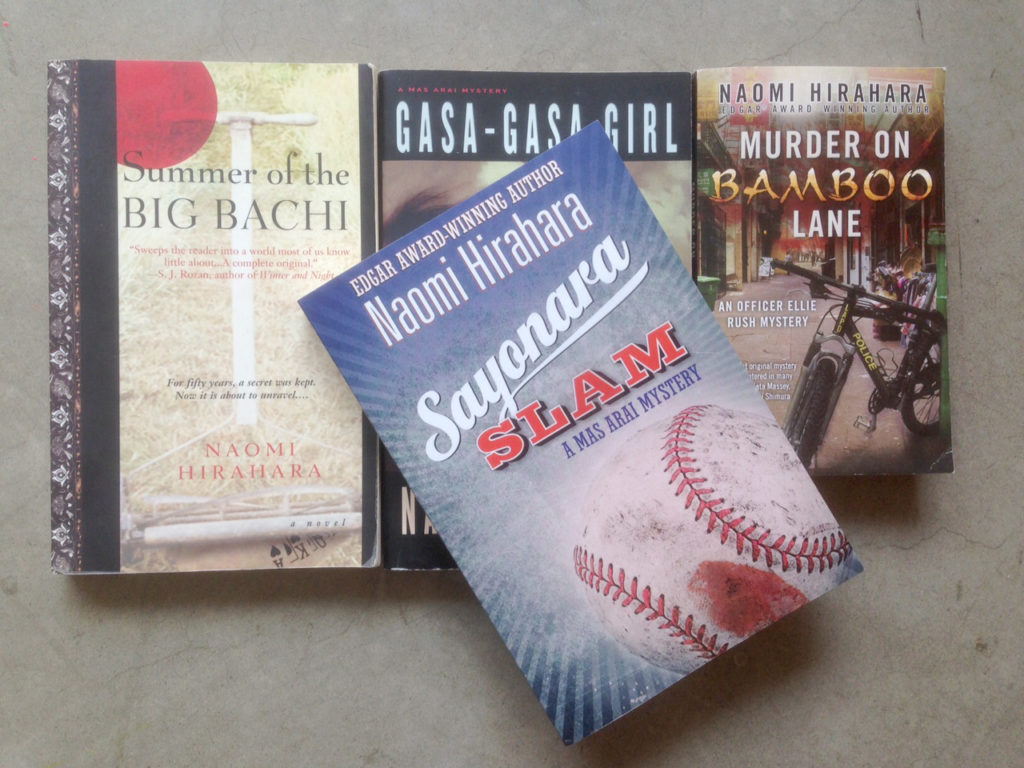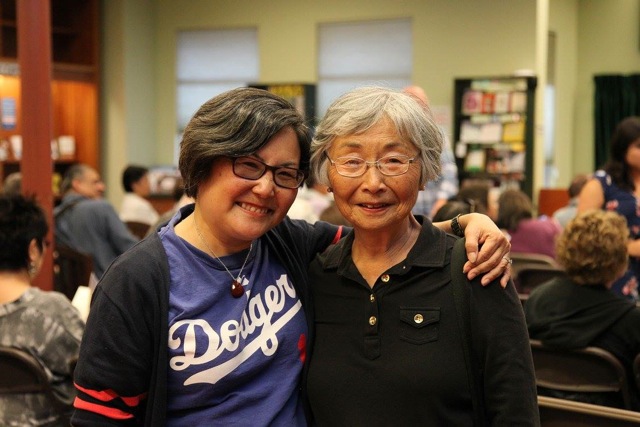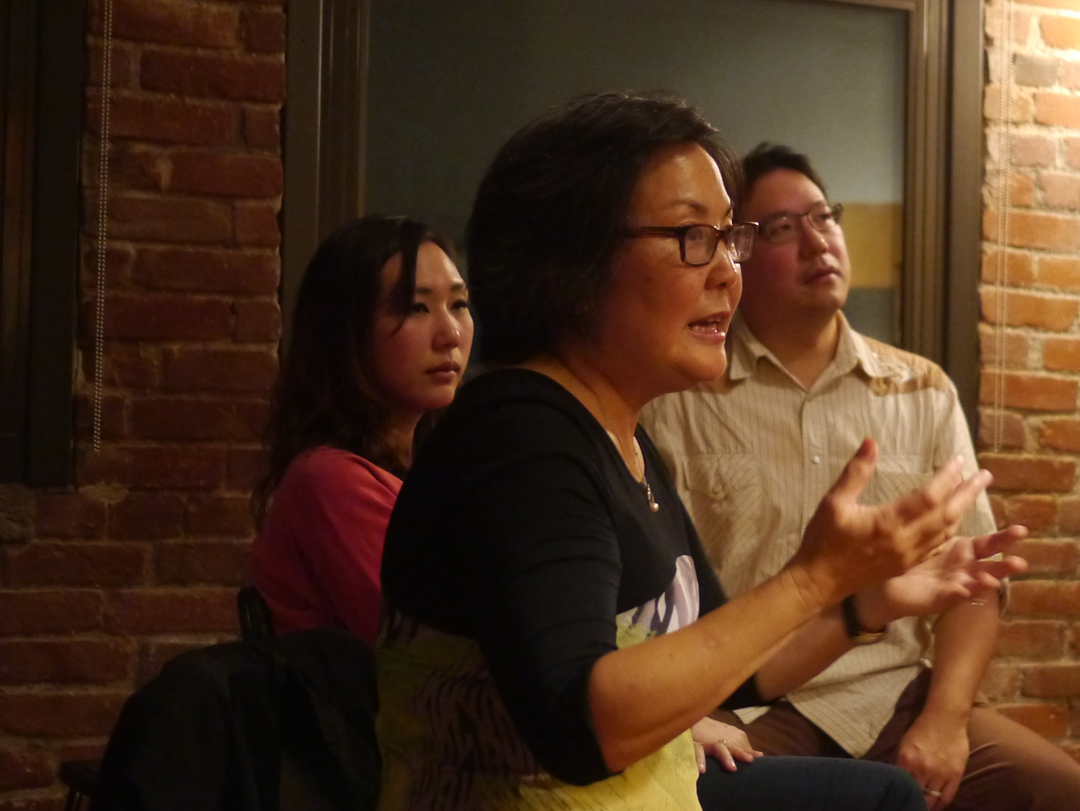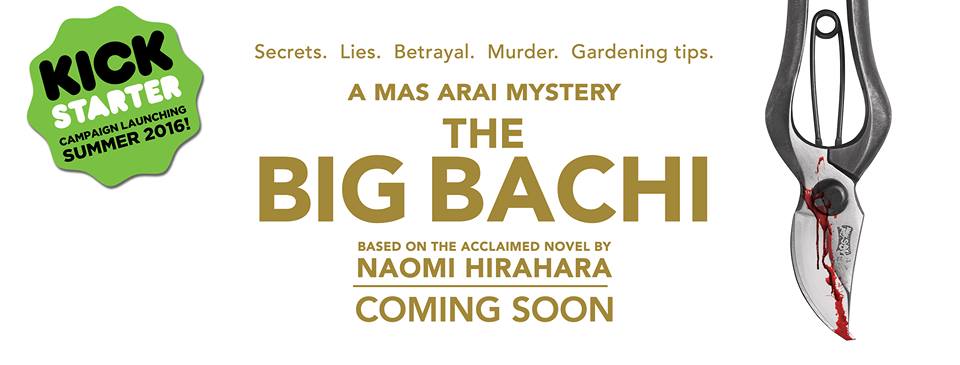May 31, 2016 8 Questions with: Naomi Hirahara

I don’t even remember how I met Naomi Hirahara. Was it through The Rafu Shimpo? Giant Robot mag? Friends of friends? Somehow, we became pals and she became an acclaimed novelist and writer with at least a dozen titles to her name. Her latest Mas Arai detective novel is titled Sayonara Slam, and features two things I love: a good mystery and Dodger Stadium. It takes the reader all around Southern California to a lot of my favorite hangouts stretching from Sawtelle to the San Gabriel Valley, including Philippe in Chinatown and Suehiro in Little Tokyo. And this isn’t like some Hollywood movie in which a car chase goes all across town but the landmarks are totally in the wrong order. As the details of a death during a Japan-Korea showdown in the World Baseball Classic unfold, it’s clear that Naomi knows and respects L.A. as well as the nuances of Asian American culture and history and the American Pastime equally well.
This is a great time to catch up with the Mas Arai novels since Naomi’s first story about the Japanese American gardener turned reluctant detective has been optioned by Oliver Ike of First Pond Entertainment. Set to direct is Derek Shimoda, while Mark Tasaka is writing the adapted screenplay. Right now, it most likely will be set in the 1960s — so a younger Mas. The independent film will be crowd funded and information on the Kickstarter-funded project will be posted on the Big Bachi page on Facebook.
But before that, check out these 8 Questions with my friend about Sayonara Slam and her creative process.
How would you describe your job?
I have a very weird job. On one hand, I have to consistently make things up. On the other hand, I dig deep into both physical and digital archives to make sure I get the tiniest historic details correct. I love that I get to write novels and do historic work in terms of nonfiction books and exhibitions. Notable exhibition work includes the Manzanar Visitors Center. I also recently co-wrote a history book with former port director Geraldine Knatz, Terminal Island: Lost Communities of Los Angeles Harbor.
How have your Sayonara Slam events gone? Are people outside of Southern California are reacting to it differently–kind of like how someone who lives in L.A. reads Chandler or Bukowski differently than someone who lives anywhere else…
My events have gone so well. It was a whirlwind of more than 15 events over the course of two months, if you include some early pre-official launch festivals.
Since I’ve been writing the Mas Arai mysteries since 2004, it’s kind of like a family reunion. I’ve gotten to know a lot of readers over the years, so even though they were strangers back then, they are friends now. The thing about L.A. is that there are bunches of expatriates everywhere. People have moved from Southern California for various reasons, but a part of their heart still remains in L.A. (even if they may deny it).
There are so many spots in Sayonara Slam that I go to all the time: Dodger Stadium, Suehiro, Philippe… Are these some of your favorite post-work destinations?
For sure. There are places that ground us, right? If Philippe somehow disappeared, I would know that something was definitely wrong with this world.
Besides promoting Sayonara Slam what are some other items on your desk?
I’m working on an exhibition celebrating the 50-year anniversary of Descanso’s Japanese Garden. I love this project because I get to go to garden on a regular basis and see the seasonal changes. I’m also working with my buddy Heather Lindquist on a book about what happened to people who were incarcerated in Manzanar. And, of course, novel work. I’m reworking a novel-in- progress called The Beauties of 1941. And planning to go to Hiroshima this summer to do research on the final Mas Arai novel.
What does your average work day look like?
No day is the same, that’s for sure. My work year is project-based, so I work backwards from the deadline to determine my calendar. My type of work is not for someone who works linearly. Certainly I need a beginning and end date, as well as a few deadlines in between, but I’m constantly juggling different projects.
Playwright Suzan-Lori Parks calls her process “lazy Susan,” in that she spends a few concentrated days on a writing project and then turns the lazy Susan to get to the next. I work a little like that – except for when I’m in the depths of a novel. When I’m about halfway in, all bets are off. The house is a mess; I’ve entered a different world.
Are you reading anything cool now? As a person who writes for a living, is it difficult to read for pleasure?
Reading for me is like eating pie. I cannot resist.
I’m finishing up an advance reading copy of Sarah Kuhn’s Heroine Complex, which is a cool urban fantasy/superhero debut featuring Asian American female characters. (It includes killer cupcakes – literal ones!)
And I’ve also started the bestselling Italian novel, My Brilliant Friend, by Elena Ferrante. It’s the first of four books following the lifelong friendship of two women. It begins with the sixtysomething female narrator wondering why her good friend’s idiot son is calling to report that his mother has been missing for two weeks. “He had no brain, and in his heart he had only himself.” She had me at the first page.
Besides books, where do you find inspiration?
Definitely movies, the more emotional the better. I love it when I’m just beaten down with tears and angst.
As a kid, what did you want to be when you grow up?
A librarian.
Have Naomi sign your books at LitFest Pasadena at Vroman’s in Pasadena this Saturday, June 4 at 4:15. Get the scoop on this and other events straight from the Edgar Award-winning author at naomihirahara.com, and follow Imprint on Twitter, Instagram, and Facebook, too.





